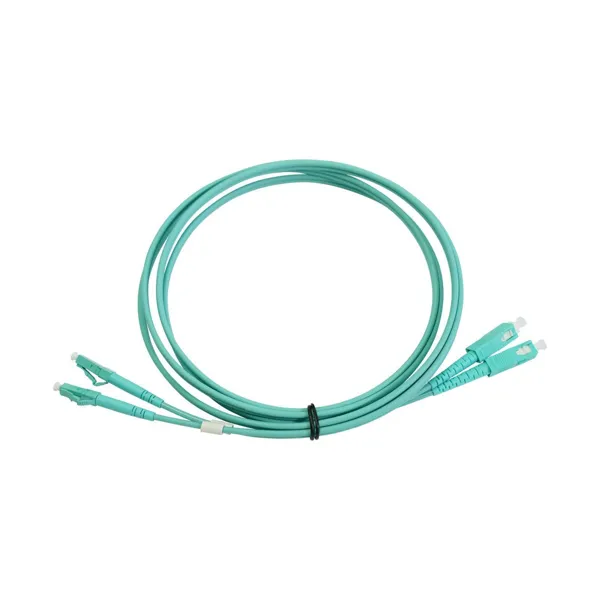OSK2SCLCOM3 - Opt.duplex cable MM OM3 2m LSFH LCPC-SCPC
Optical duplex patch cable LC/PC - SC/PC, multimode (MM) OM3, LSFH inner cable
Pre-assembled optical patch cables for connecting network elements via multimode fibre optic cable (MM). As they are duplex patch cables, they are ideal for fibre optic networks where the same element is used for upload and download. The LC/PC connectors and SC/PC connectors also allow the cables to be used as adapters between devices with different connectivity. The jacket is LSFH and is recommended for indoor installation.
Supplied in individual packaging.
Item no. OSK2SCLCOM3
Product data
- Ref.No.: 230921
- EAN13: 8424450273838
Highlights
-Labels are supplied to indicate that the optical cables belong together
-Includes aramid fibres to reinforce the structure
-Fibre type: Multimode OM3 ITU-T G.651.1
-Duplex patch cable: two fibre optic cables
-LSFH sheath, water blue colour
-LC/PC and SC/CP connectors
-2m long
Good to know
Multimode fibre types
Multimode optical fibres (MM) can transmit more than one wavelength simultaneously, allowing several signals to be transmitted at the same time. Their main advantage over single-mode (SM) fibres is the lower cost of both the fibre and the optical devices, making them an ideal solution for short distances, e.g. in corporate networks, communication rooms or data centres.
Multimode fibre optic cables are divided into 5 categories, called OM (Optical Multimode). They range from OM1 to OM5, and differ mainly in their transmission speed in relation to distance. The following table shows the distance that each category achieves depending on the transmission speed.
Multimode fibres also differ in other factors:
-OM1 fibres have a core diameter of 62.5μm, while OM2, OM3, OM4 and OM5 fibres have a smaller core of 50μm
-OM1 and OM2 were developed first. They are designed for use with LED light sources and are no longer used today as they are not suitable for high-speed networks. The subsequent categories OM3, OM4 and OM5 were developed for use with laser emitters (VCSEL), which achieve a higher bandwidth and speed
-OM3 and OM4 fibres work with wavelengths of 850 nm, but OM5 fibres have been optimised for WDM (Wave Division Multiplexing) applications. They can transmit up to 4 channels at higher wavelengths (880, 910 and 940 nm), resulting in a very high bandwidth
The following table summarises the most important features of the individual multimode fibre types.
What is the difference between OM3 and OM4?
Among the various categories of multimode fibres (MM), OM3 and OM4 fibres are the most widely used today, as they offer high transmission speeds and bandwidths at an affordable price. The OM4 fibre is a further development of the OM3 fibre which, thanks to its improved internal structure, has a lower attenuation and can therefore operate with a higher bandwidth than the OM3 fibre and reach greater distances.














